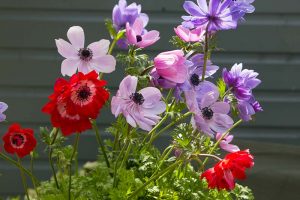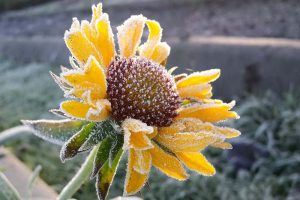Heaths and heathers are popular evergreen shrubs in the Ericaceae family, beloved in temperate gardens for their flower and foliage colors, spreading habit, and easy care.
And they propagate readily with the right treatment.

We link to vendors to help you find relevant products. If you buy from one of our links, we may earn a commission.
Winter heaths, Erica carnea, hybrids, and other Erica species are known as winter/spring heathers and they have outstanding cold hardiness.
Flowering when it’s too cold for most plants, they’re among the first to bloom and create gorgeous waves of fuchsia, magenta, mauve, pink, or white in late winter to spring, providing an important early food source for bees.
Scotch, summer, or ling heathers, Calluna vulgaris, are the summer/fall varieties and these also have exceptional cold hardiness.
These varieties bloom in midsummer and fall, with flower colors in mauve, pink, purple, ruby, or white.
And many C. vulgaris cultivars have vibrant, color-changing foliage – starting out with bronze, burgundy, chartreuse, coral, gray, green, or gold foliage in spring, they turn mostly green for summer, and then take on bronze and plum hues in winter.
Varieties in both genera are easily cultivated and make beautiful accents, borders, ground covers, and container or rockery plants.
Plus, they have excellent drought tolerance once established, are salt resistant, and deer leave them alone.
Regardless of the type growing in your garden, propagation methods are the same.
These woody shrubs take some time to root, but with a little patience, you can enjoy many multiples of your favorite varieties, with colors and characteristics true to the parents – or not, if you prefer to take your chances with the wild card look!
Are you and your garden ready for more colorful, easy-care heaths and heathers? Then join us now for all the details on how to propagate heather plants.
Here’s what you’ll find ahead:
What You’ll Learn
Heath and Heather Basics
Low-growing winter heaths (Erica spp.) have a mature height of 12 to 24 inches and typically flower from January to May.
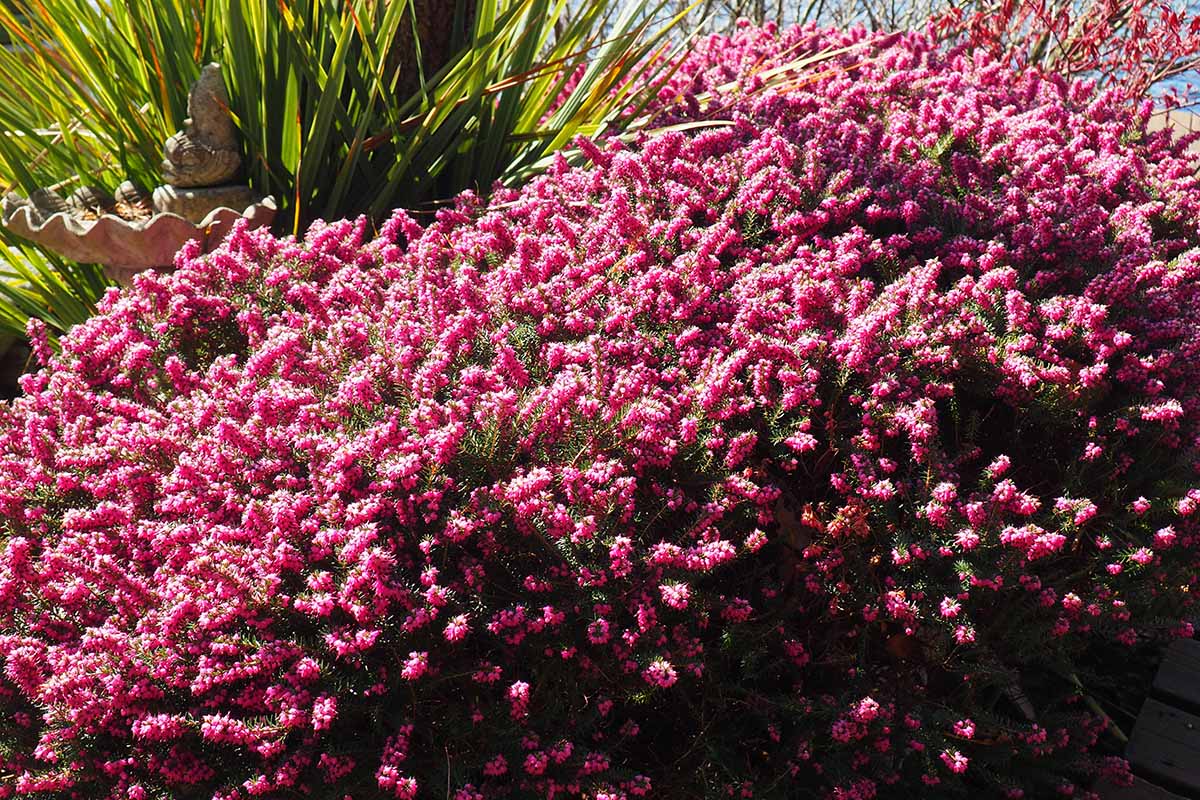
Erica is a large genus of flowering evergreens native to parts of Africa and Europe. These feature needle-like leaves.
They do best in acidic soil with a pH of 4.5 to 6.0, with some types like E. carnea being tolerant of neutral to slightly alkaline soil with a pH of 7.0 to 7.5.
Hardy in USDA Zones 5 to 7, many do well in Zone 4 with ample snow cover.
Heathers (C. vulgaris) are summer flowering and taller, forming mounds of up to 36 inches that need annual pruning to maintain an attractive shape.

Native to Europe and Asia Minor, there are hundreds of summer-flowering cultivars with flattish, cedar-like leaves.
C. vulgaris plants need acidic soil with a pH of 4.5 to 6.0 and are hardy in Zones 4 to 6.
All types need well-draining soil and full sun. And in both genera, many varieties do well in warmer regions with dry heat provided they have some afternoon shade.
Unfortunately, neither heaths nor heathers do well in hot, humid conditions.
Learn more about heathers in our growing guide.
Seed Propagation
Heath and heather species plants can be propagated from seed, but results vary considerably with no guarantee that seedlings will have the same characteristics as the parents.
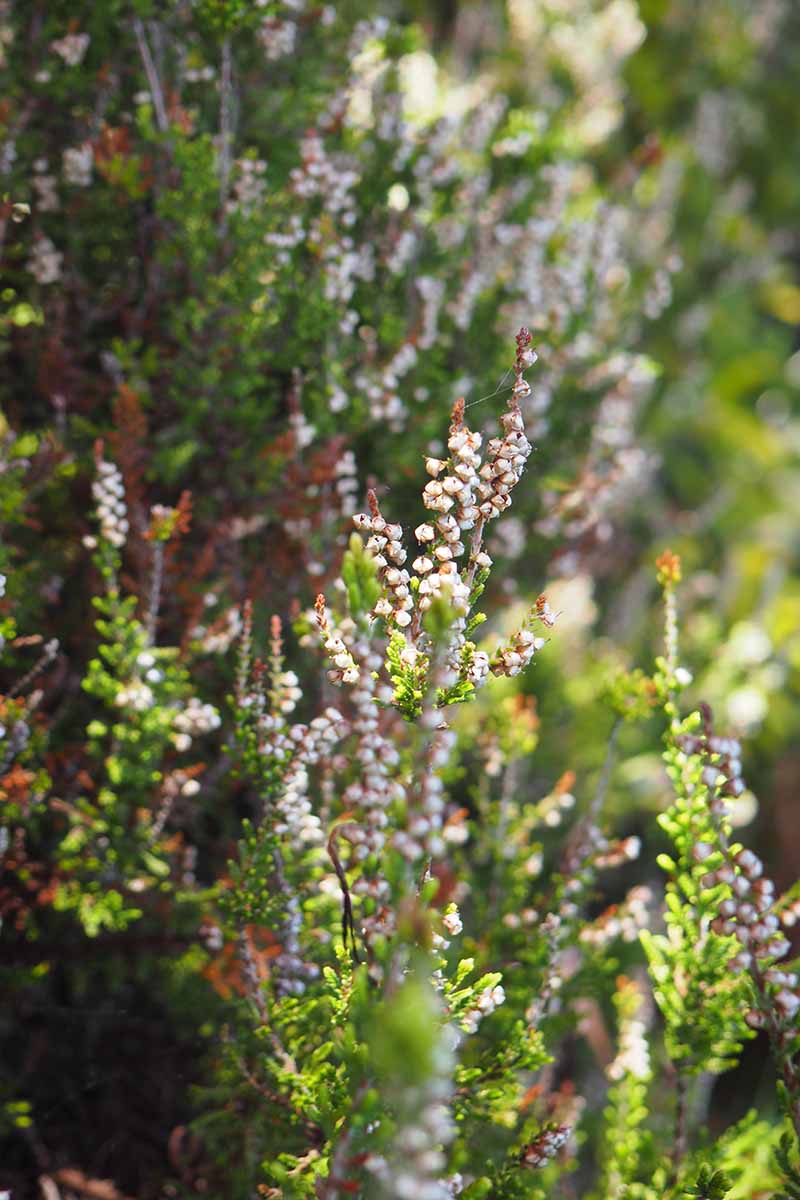
And many cultivars are sterile, producing no seeds at all or ones that aren’t viable for growth.
So if you’re up for cultivating some mystery plants, here’s how to propagate seed.
Collect seeds a few weeks after flowering when the flower capsules are dry and store them in a dry container in a cool, dark environment.
Seeds germinate best when they’re fresh and sprout in cool temperatures, so starting them in autumn is optimal – but early spring works as well.
Fill small starter pots with a loamy, slightly acidic growing medium. Or mix one part peat moss with three parts seed-starting mix for a slightly acidic blend.
Water lightly to moisten.
Sow the small seeds on the soil surface about half an inch apart and cover lightly with soil, then firm gently. Germination can be spotty, so plant four to six seeds per pot. Should they all germinate, thin out the weakest and smallest to discard.
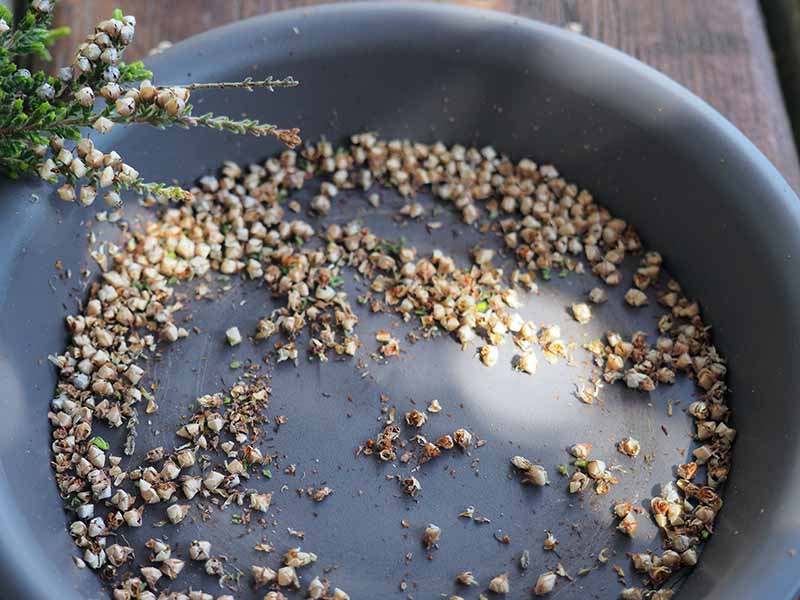
To avoid disturbing the seeds, water pots from the bottom or use a spray bottle to mist the soil surface until it’s thoroughly moist.
Place pots in a cool location, ideally 55 to 70°F, in bright, indirect light.
Keep the soil lightly moist at all times.
Seeds typically germinate at around 30 days but can take up to 90 days to sprout.
After seedlings are about two inches tall, pinch out the tops to encourage branching.
Move seedlings outdoors into a protected, frost-free area with bright light and regular water. Plant out in early spring after new growth appears.
Layering
Layering stems until they root produces true copies of the parent and is the easiest propagation method. Layering can be done at any time, but it also takes the longest.
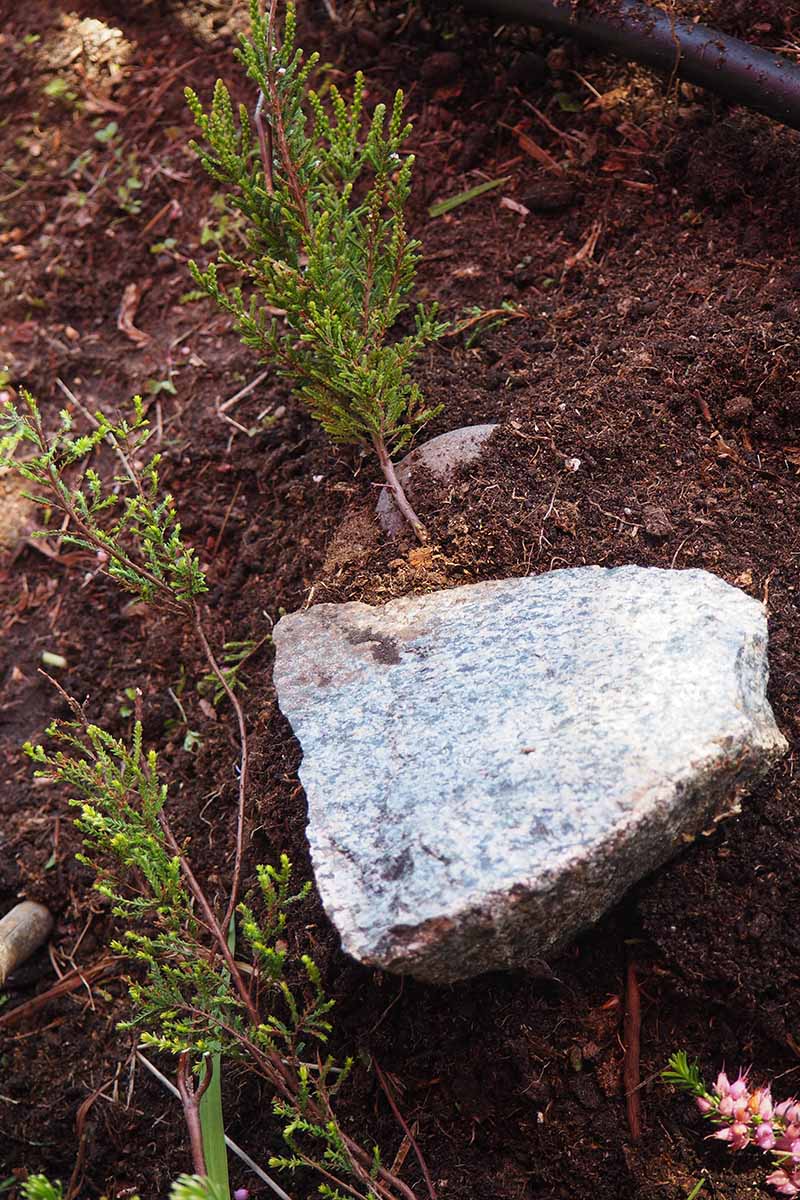
To layer, choose a nonflowering outer branch from around the plant’s perimeter and remove all foliage from the section to be layered.
Create a small trench one to two inches deep and just inside the drip line. If needed, mound soil into a small hill and then make a trench in the hilltop.
Gently pull the selected branch down and lay the defoliated section in the trench.
Backfill the trench with soil and anchor the layered stem section in place with a rock or tent peg, ensuring at least two inches of the stem tip is above the soil.
Water the parent plant regularly for at least six months, then test to see if rooting has occurred in the buried section.
Test by removing the anchor and giving the growing tip a gentle tug. If you feel resistance or see new growth emerging from the trench area, the layered stem has rooted.
Use clean, sharp garden shears to snip the layered branch from the parent plant.
Dig up the layered root ball and take plenty of soil with it. Insert a trowel six inches deep and four inches out from the layered stem to prevent damaging tender new roots.
Transplant into a garden bed or container as soon as the new plant is removed from the parent.
Rooting Stem Cuttings
Stem cuttings of semi-ripe wood also produce clones and this is probably the most reliable propagation method – but they require a bit of attention for success.
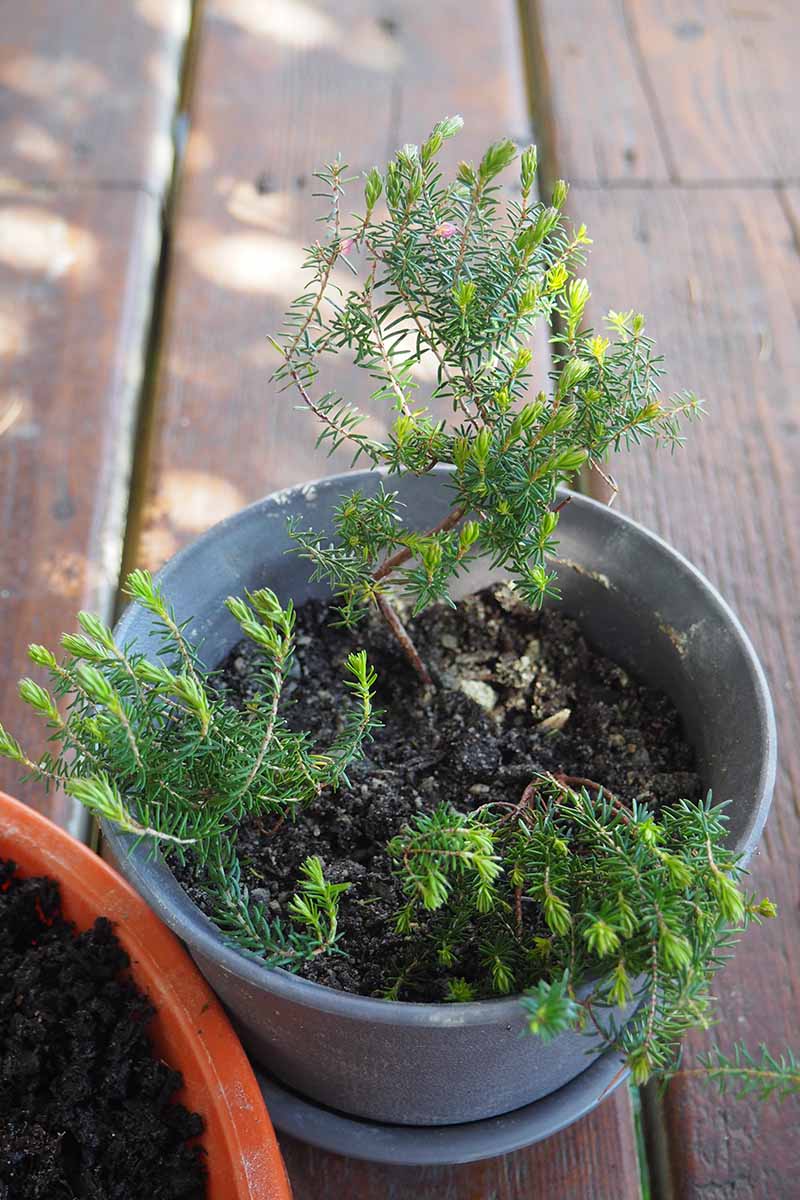
Stem cuttings for C. vulgaris varieties are best taken in late summer or early autumn after flowering has finished.
Erica cuttings should be taken in early summer after they’ve finished flowering.
Choose long, flexible, and nonflowering stems from the plant’s perimeter.
Carefully pull down to peel it away from the main stem, taking a small section, or “heel” of the main stem with it. The ideal is to have a heel about one-half to one inch long, exposing both the inner and outer bark.

Dip heel sections into a rooting hormone if desired.
Fill four-inch starter pots with a half-and-half mix of landscape sand and compost.
Soak the rooting medium until it’s wet and insert two or three stems into each pot, firming the soil around each stem.
Cover pots with a small, clear cloche or use a plastic bag, but don’t allow it to touch the foliage. Use bamboo skewers or chopsticks to tent the plastic and keep it away from the cuttings.
Set pots in a location with bright, indirect light and cool temperatures of 60 to 70°F.
Keep the soil continuously moist.
Lift the cloche or plastic bag for a few hours every week to air out plants or when condensation becomes too heavy.
New growth starts to appear in three to four months. If nothing shows in six months and tugged cuttings pull up easily, rooting has failed – toss your cuttings and try again next summer.
Once successful cuttings have several sets of new leaves, harden them off in a partly shady spot outdoors for seven to 14 days.
Plant out into the garden or containers at least four weeks prior to your first expected frost date.
Patience Required
Showy, flowering evergreens, you can easily propagate your favorite heath and heather plants… but it won’t happen quickly!
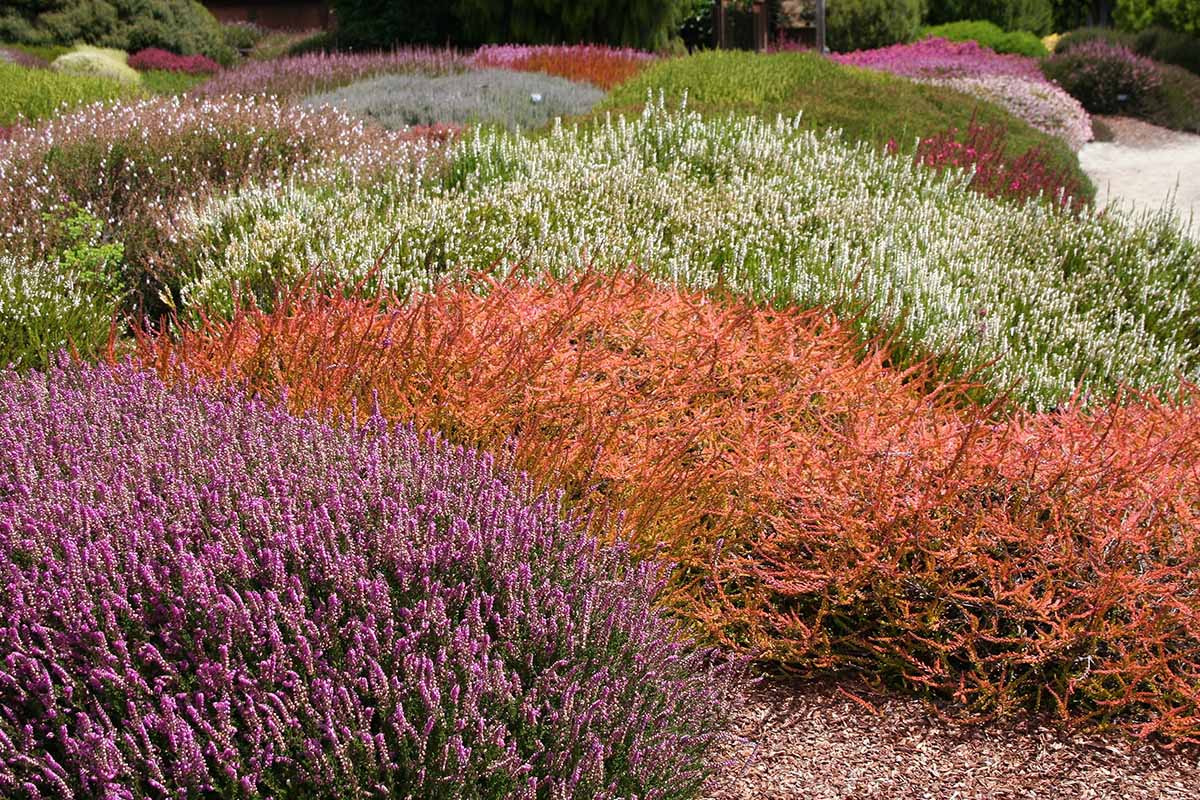
Seeds can give the fastest results, but germination is spotty and results vary with offspring often having characteristics different from the parent plant.
Layering and stem cuttings create new plants identical to their parents, but they can take several months to root.
Whatever method you choose, keep the soil consistently moist and be patient – no tugging on stems before they’re ready!
What heath or heather cultivars would you like to multiply? Tell us in the comments section below.
And for more showy flowers to propagate, add these guides to your reading list next:

